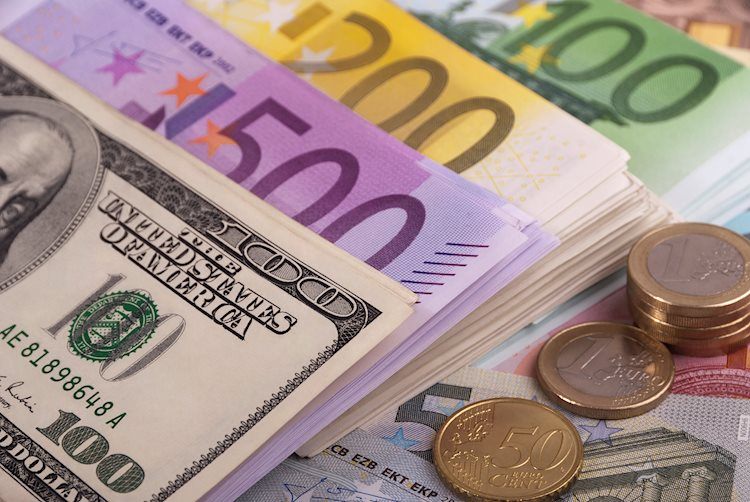- EUR/USD struggles to find fresh bids as price action holds near 1.1150.
- Key EU inflation print due early Tuesday, investors on the lookout for looming NFP.
- Fed speakers knock back early expectations of further jumbo cuts.
EUR/USD cycled familiar territory to kick off the new trading, holding north of the 1.1100 handle but failing to find any new territory on the high end. An update on pan-EU inflation figures is due early during the Tuesday European market session, on the heels of European Central Bank (ECB) President Christine Lagarde cautioning that EU inflation is likely to dip below baseline levels before ticking back up later in the year.
Preliminary Harmonized Index of Consumer Prices (HICP) inflation from across the European continent is slated for Tuesday, with the headline HICP YoY print expected to dip to 1.9% on an annualized basis from the previous print of 2.2%. Despite the cooling in overall inflation, ECB President Lagarde noted that an uptick in October’s inflation figure can’t be ruled out as central bankers grapple with outsized expectations of rate cuts from market participants. On the US side, markets will be closely watching the lead-up to Friday’s US Nonfarm Payrolls (NFP) report for September.
Several Federal Reserve officials made announcements on Monday. Atlanta Fed President Raphael Bostic emphasized the importance of the jobs market and hinted at the possibility of further rate cuts based on economic data. Bostic specified that if the non-farm payroll (NFP) jobs report shows fewer than 100K net new jobs, it could prompt the Fed to take more aggressive action.
Following Bostic’s comments, Fed Chair Jerome Powell stated that investors should not anticipate additional large rate cuts unless there is a significant downturn in US economic data. This statement caused the US dollar to strengthen and led rate traders to reassess their expectations for a 50 basis points rate cut in November. Powell indicated to investors that following the substantial rate cut in September, the Fed is likely to implement two more 25 basis points rate cuts in the near term, hobbling market expectations of a follow-up 50 bps rate trim in November.
EUR/USD price forecast
Things are getting messy on the Fiber chart with the pair cycling the 1.1150 region. Bulls and bears remain equally off-balance, despite EUR/USD’s recent rebound from September’s swing low toward the 1.1000 major price handle.
Despite repeated tests into fresh highs north of the 1.1200 handle last week, Fiber remains firmly constrained in a near-term consolidation trap, even as the 50-day Exponential Moving Average (EMA) limits downside potential from just below 1.1050.
EUR/USD daily chart
Euro FAQs
The Euro is the currency for the 19 European Union countries that belong to the Eurozone. It is the second most heavily traded currency in the world behind the US Dollar. In 2022, it accounted for 31% of all foreign exchange transactions, with an average daily turnover of over $2.2 trillion a day. EUR/USD is the most heavily traded currency pair in the world, accounting for an estimated 30% off all transactions, followed by EUR/JPY (4%), EUR/GBP (3%) and EUR/AUD (2%).
The European Central Bank (ECB) in Frankfurt, Germany, is the reserve bank for the Eurozone. The ECB sets interest rates and manages monetary policy. The ECB’s primary mandate is to maintain price stability, which means either controlling inflation or stimulating growth. Its primary tool is the raising or lowering of interest rates. Relatively high interest rates – or the expectation of higher rates – will usually benefit the Euro and vice versa. The ECB Governing Council makes monetary policy decisions at meetings held eight times a year. Decisions are made by heads of the Eurozone national banks and six permanent members, including the President of the ECB, Christine Lagarde.
Eurozone inflation data, measured by the Harmonized Index of Consumer Prices (HICP), is an important econometric for the Euro. If inflation rises more than expected, especially if above the ECB’s 2% target, it obliges the ECB to raise interest rates to bring it back under control. Relatively high interest rates compared to its counterparts will usually benefit the Euro, as it makes the region more attractive as a place for global investors to park their money.
Data releases gauge the health of the economy and can impact on the Euro. Indicators such as GDP, Manufacturing and Services PMIs, employment, and consumer sentiment surveys can all influence the direction of the single currency. A strong economy is good for the Euro. Not only does it attract more foreign investment but it may encourage the ECB to put up interest rates, which will directly strengthen the Euro. Otherwise, if economic data is weak, the Euro is likely to fall. Economic data for the four largest economies in the euro area (Germany, France, Italy and Spain) are especially significant, as they account for 75% of the Eurozone’s economy.
Another significant data release for the Euro is the Trade Balance. This indicator measures the difference between what a country earns from its exports and what it spends on imports over a given period. If a country produces highly sought after exports then its currency will gain in value purely from the extra demand created from foreign buyers seeking to purchase these goods. Therefore, a positive net Trade Balance strengthens a currency and vice versa for a negative balance.
Read the full article here

